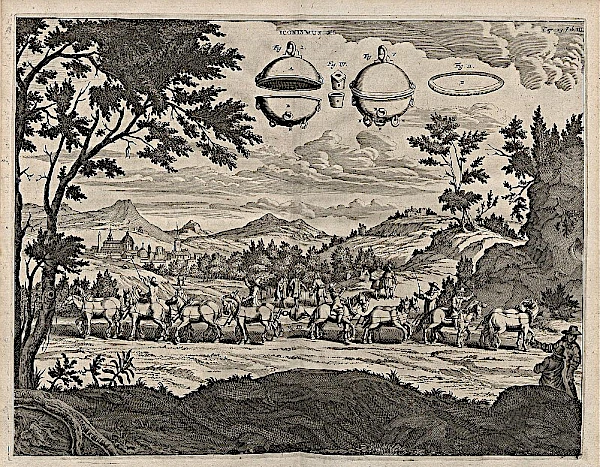
Do not confuse vacuum with nothingness.
In everyday language, a "empty" container (a glass, a bottle) is actually filled with air. At atmospheric pressure, one cubic millimeter of air contains about 2 × 1019 molecules, or two quintillion. This density illustrates the ambiguity of the term: if vacuum is never total, does it deserve its name?
Physicists define vacuum as the state obtained after removing all detectable matter from a given volume, according to current technological limits. It is therefore a relative vacuum, never absolute.
A vacuum pump is used to extract molecules from a sealed volume. The quality of the vacuum is measured by the residual pressure, expressed in:
On Earth, the best ultrahigh vacuums reach 10-10 to 10-12 Pa (e.g., particle accelerators like the LHC). Even under these conditions, molecules remain, and the vacuum remains relative.
Pressure in pascals (Pa): 1 Pa corresponds to a force of 1 newton (N) applied uniformly over 1 square meter.
Definition of the newton (N): SI unit of force. 1 N is the force capable of giving a mass of 1 kg an acceleration of 1 m/s².
Example: An acceleration of 1 m/s² means that an object's speed increases by 3.6 km/h every second (1 m/s = 3.6 km/h).
Contrary to popular belief, vacuum is not "empty" of energy:
A total vacuum would therefore imply the absence both of matter and radiation/energy. Such a state does not exist in the observable universe (where cosmic background radiation fills space at 2.7 K), nor in laboratories.
In Relativity: The Special and General Theory (1916), Albert Einstein (1879-1955) devotes an appendix to the problem of space and vacuum. He cites René Descartes (1596-1650) and Emmanuel Kant (1724-1804), and rejects the idea of a space empty of fields:
« Physical objects are not in space, but these objects have spatial extension. Thus, the concept of empty space loses its meaning. »
Albert Einstein, preface to the 9th edition (1952).
For Einstein, spacetime is a dynamic entity, shaped by matter and energy (equation E = mc²). The "vacuum" then becomes a field of potentials, where even the absence of matter leaves room for geometric properties (curvature of spacetime).
In 1654, Otto von Guericke (mayor of Magdeburg and scientist) conducted a landmark experiment to demonstrate the effect of atmospheric pressure: